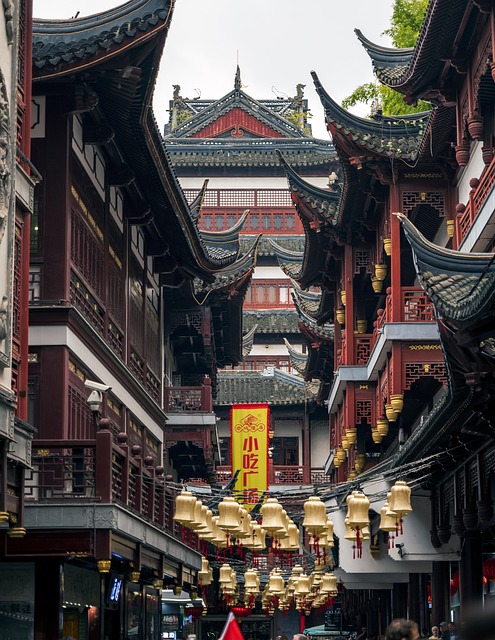Green roofs, integrating vegetation with building structures, offer enhanced sustainability through natural insulation and cooling. By absorbing sunlight and releasing oxygen, plants reduce the heat island effect in urban areas, lowering energy consumption for air conditioning by up to 40%. These eco-friendly solutions also improve air quality, manage stormwater, and extend roof lifespans. To maximize their benefits, integrate energy-efficient cool roofs with reflective materials, high-performance insulation, and efficient ventilation. Careful design considering local climate, suitable vegetation, drainage, weight distribution, and accessibility for maintenance is crucial for optimal performance. Successful case studies demonstrate green roofs' potential in creating sustainable urban environments.
“Unleash the power of nature with green roofs—a revolutionary approach to sustainable urban living. This comprehensive guide explores the transformative potential of integrating vegetation in roof spaces for enhanced cooling and insulation. From understanding the fundamentals of green roofs to delving into innovative cool roof technologies, we uncover how these natural solutions contribute to energy efficiency. Discover successful case studies, gain design insights, and learn why embracing green roofs is a step towards a cooler, more sustainable future.”
Understanding Green Roofs and Their Benefits
Green roofs, also known as living roofs, are designed landscapes that incorporate vegetation and grow media into a roof structure. They offer a unique blend of environmental benefits, enhancing the overall sustainability of buildings. By integrating plants, green roofs provide natural insulation, reducing the need for artificial cooling systems. This is particularly advantageous in urban areas where concrete and asphalt structures contribute to the urban heat island effect.
One of the key advantages is their energy-efficient cooling properties. Vegetation absorbs sunlight and releases oxygen, helping to lower roof temperatures. During hot summer months, this natural process can significantly decrease the amount of heat transferred into buildings, leading to reduced energy consumption for air conditioning. Furthermore, green roofs contribute to improved air quality, stormwater management, and extended roof lifespan, making them a sustainable solution for modern architecture.
The Role of Vegetation in Natural Cooling
The presence of vegetation plays a pivotal role in achieving natural cooling and enhancing insulation properties, especially in urban areas where heat islands are prevalent. Green roofs, adorned with various plant species, offer a sustainable solution to mitigate the urban heat island effect. Through photosynthesis, plants absorb sunlight and release oxygen, which helps lower the surrounding air temperature. This process, combined with evapotranspiration—where plants release water vapor into the atmosphere—acts as a natural air conditioner.
Vegetation on roofs also provides insulation by creating a protective layer that reduces heat transfer. During hot days, the vegetation acts as a shield, preventing solar radiation from heating up the building’s interior. This is particularly beneficial for energy-efficient cool roofs, as it decreases the demand for artificial cooling systems, leading to significant energy savings and a reduced carbon footprint.
Energy-Efficient Cool Roof Technologies
Green roofs, with their vegetation and organic matter, offer an innovative solution for natural cooling and insulation. However, to maximize their energy efficiency, it’s crucial to integrate energy-efficient cool roof technologies. These advanced systems are designed to reflect sunlight, reduce heat absorption, and minimize thermal transfer, thereby lowering the building’s overall energy consumption.
Cool roofs use reflective materials, high-performance insulation, and efficient ventilation to maintain optimal indoor temperatures. By reflecting a significant portion of sunlight back into the atmosphere, they significantly decrease the amount of heat transferred to the building envelope. This not only reduces cooling costs but also contributes to a more sustainable and environmentally friendly built environment.
Implementation and Design Considerations
Implementing green roofs with vegetation offers a sustainable and aesthetically pleasing solution for natural cooling and insulation. When designing, consider the local climate and available sunlight to ensure optimal plant growth. The type of vegetation should be suited to the region’s conditions, providing both shading and insulation benefits. Proper drainage is crucial to prevent water damage, so incorporating a well-designed runoff system is essential.
Additionally, green roofs require careful planning for weight distribution, as the added load must be supported by the existing structure. Accessibility for maintenance and irrigation systems should also be factored in. Integrating energy-efficient cool roof materials alongside vegetation can further enhance thermal performance, reducing the need for artificial cooling and contributing to a more sustainable built environment.
Case Studies: Successful Green Roof Projects
Green roofs, with their vegetation and soil cover, offer a unique and sustainable solution for cooling and insulation in urban areas. Numerous case studies have demonstrated the effectiveness of this approach in creating energy-efficient cool roofs that reduce the urban heat island effect. For instance, the City of Toronto’s Green Roof Program has shown significant results, with some projects achieving up to 40% less heating and cooling energy use compared to conventional buildings. Another notable example is the Amazon headquarters in Seattle, which features a vast green roof designed to reduce water consumption and provide insulation during varying weather conditions. These successful implementations highlight the potential for widespread adoption of green roofs as an environmentally friendly and cost-effective strategy for modern urban development.
Green roofs, with their vegetation, offer a sustainable solution for natural cooling and insulation, contributing to energy-efficient cool roofs. By implementing these systems, cities can reduce urban heat island effects, improve building performance, and enhance biodiversity. As seen in successful case studies, thoughtful design and consideration are key to harnessing the benefits of green roofs, making them a valuable addition to modern urban landscapes.
